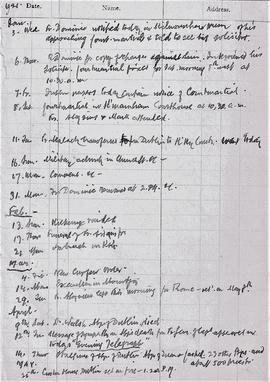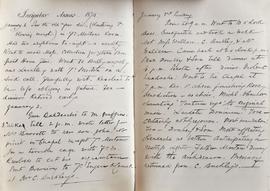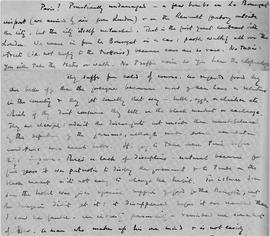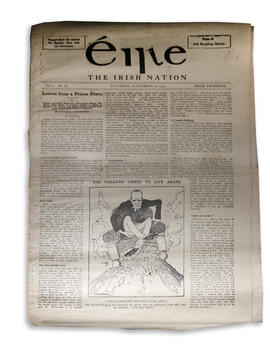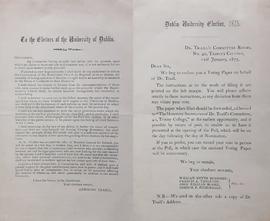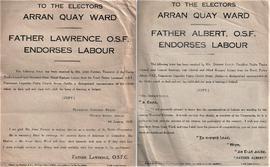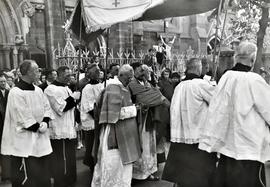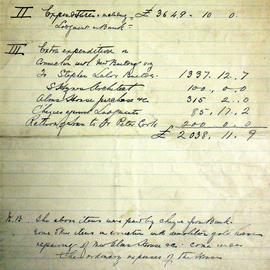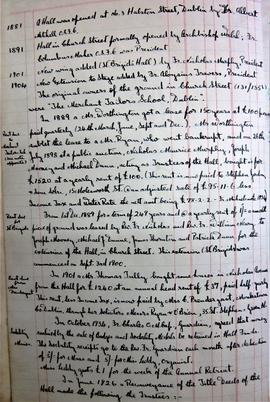Diary of Fr. Stanislaus Kavanagh OFM Cap.
- IE CA IR-1/5/3/1
- File
- 2 Jan. 1921-13 Dec. 1921
Part of Irish Capuchin Archives
‘Charles Letts’s Small Octavo Diary and Note Book’. A daily record diary of Fr. Stanislaus Kavanagh OFM Cap., Church Street, Dublin. Routine entries record the ministries and day-to-day activities of various Capuchin friars. The diary also chronicles the detention and trial of Fr. Dominic O’Connor OFM Cap. An entry on 5 Jan. 1921 reads: ‘Fr. Dominic OSFC notified today in Kilmainham Prison of his approaching Court Martial and told to see his solicitor’. Other entries in the diary refer to the activities of British military forces in the wake of an upsurge in Republican attacks. On 16 Jan. Fr. Stanislaus wrote ‘The front portion of our Church and whole street closed with barbed wire. … This was done in early hours of morning. Many unable to go to Mass to day. House to house search by military. Show’s the respect of the English government for the Lord’s day’. Fr. Dominic’s transfer ‘under heavy escort’ to Kingstown for the boat to take him to Wormwood Scrubs Prison was recorded on 31 Jan. 1921. On 13 February, Fr. Stanislaus noted that the Capuchin Friary in Kilkenny was ‘raided by the Black and Tans in their usual rough fashion’. A loose page in the file summarizes some key events in 1921. Reference is made to the court martial in Kilmainham Jail of Fr. Dominic O’Connor OFM Cap. Other events mentioned in the 1921 summary include military raids in Kilkenny (13 February), the imposition of a curfew order (4 March), the executions of the Irish Volunteers (Thomas Bryan, Frank Flood, Bernard Ryan, Patrick Doyle, Patrick Moran and Thomas Whelan) in Mountjoy Jail on 14 March, the death of Archbishop William Walsh (9 April), and the burning of the Custom House in Dublin following an attack by the Irish Republican Army (25 May).
Kavanagh, Stanislaus, 1876-1965, Capuchin priest

